PRECAST UNDERGROUND WATER TANKS
DIG, DROP AND USE
In the present scenario, water is becoming a very scarce commodity and we should take all measures to store and use it religiously. Considering all this, @ VME, we are offering this product.
The sizes of the tanks have been designed keeping in mind the need for erecting the tanks in congested areas and places with very less clearance. These tanks have also been priced in a manner that it is lower than the cost of the conventional tank.

PRECAST CONCRETE TANKS

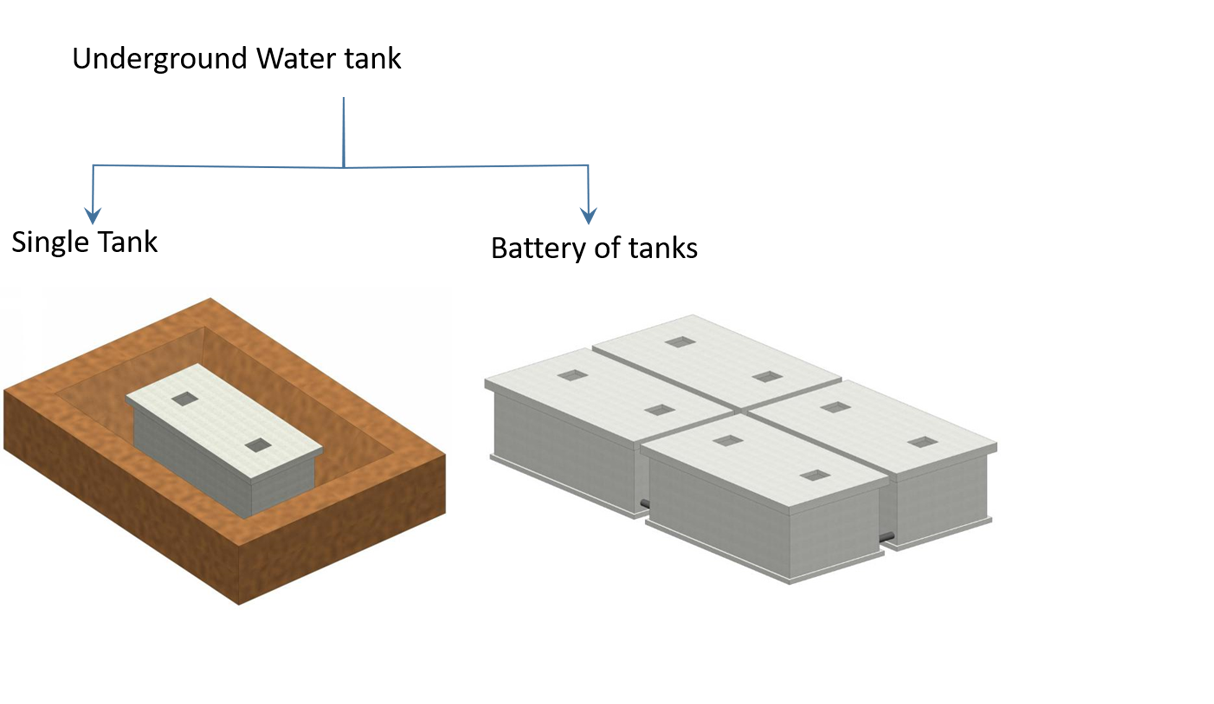

INSTALLATION PROCEDURE OF BATTERY OF TANKS

INSTALLATION PROCEDURE OF BATTERY OF TANKS
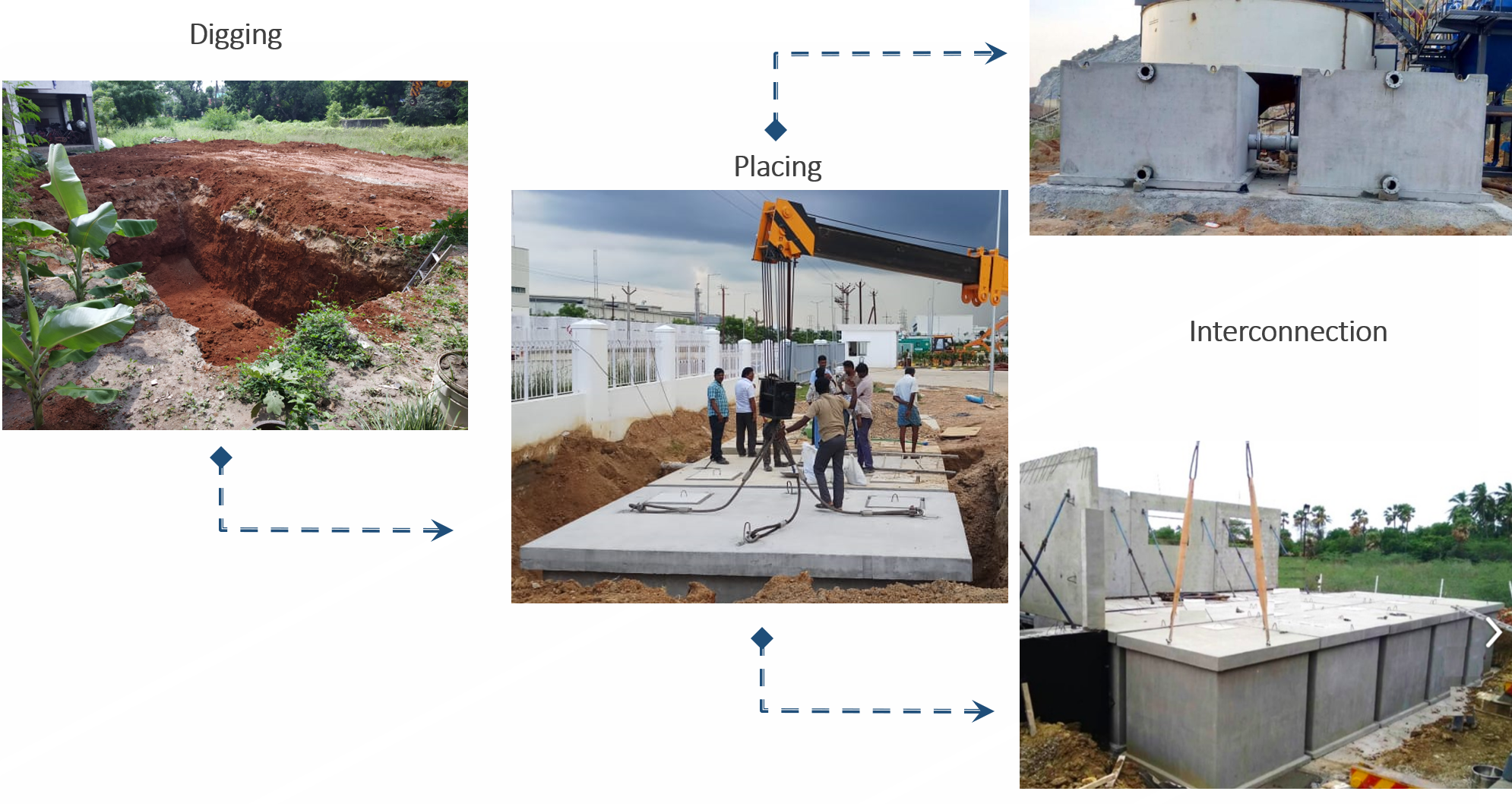
APPLICATIONS OF PRECAST CONCRETE UNDERGROUND FRESH WATER TANKS
- Water storage tank for domestic, Industrial use
- Rain water harvesting tanks
- Fire fighting tanks
- Fish Culture
ADVANTAGES OF PRECAST TANKS OVER CONVENTIONAL SYSTEMS
1. Precast concrete tanks are quick to build when compared with a conventional tank & the danger of working in deep pits for longer duration is avoided.

CONVENTIONAL SYSTEM - TYPE 1
Poor workmanship: There is a huge shortage of quality manpower and it will not be possible to check closely and also difficult to access the place behind the wall, towards the earthen side.

CONVENTIONAL SYSTEM - TYPE 2

CONVENTIONAL SYSTEM - TYPE 3
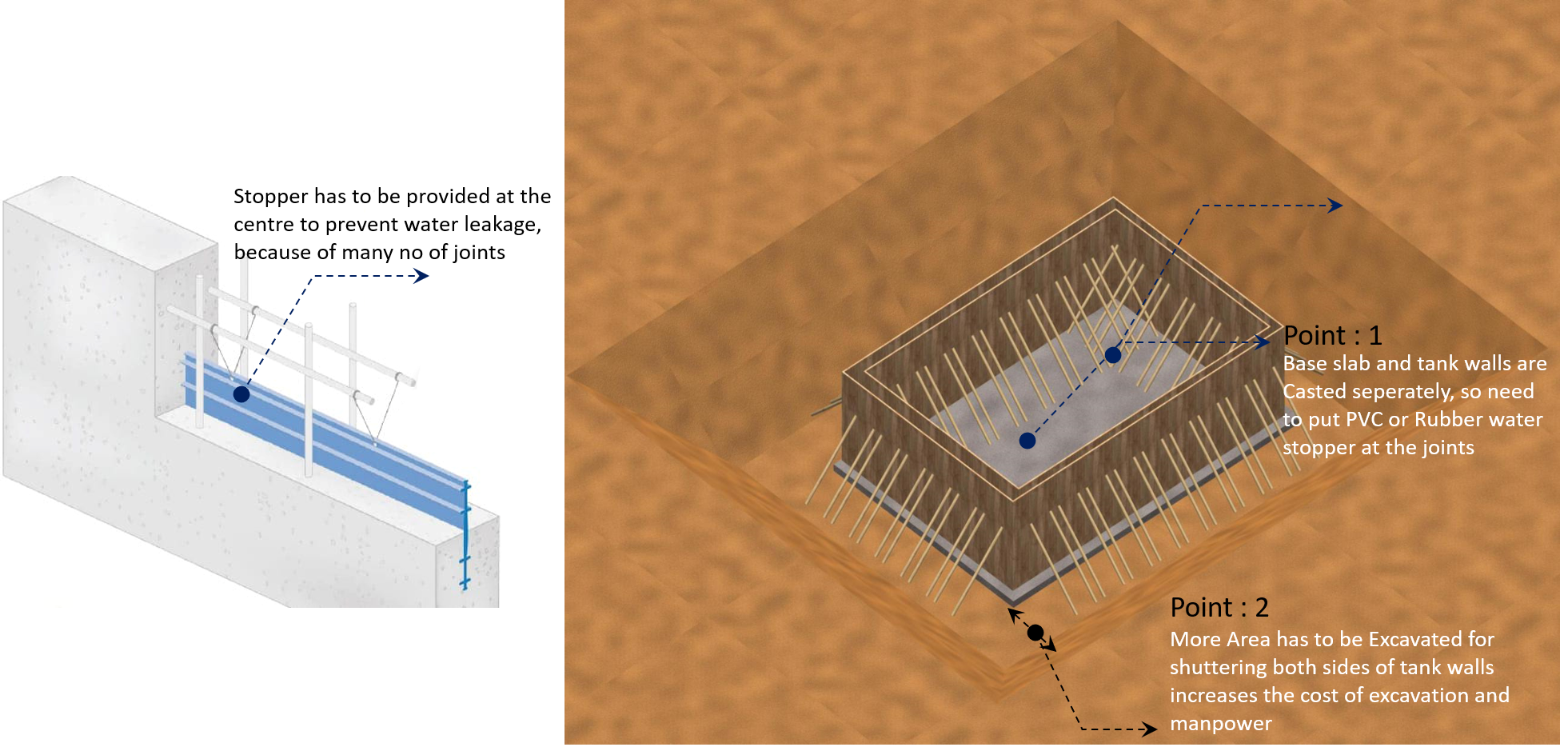
COMMON PROBLEMS FACED IN CONVENTIONAL TANKS
When Concrete dries, the moisture lose from it’s fine pores resulting in shrinkage. Shrinkage is restrained by subgrade or foundation thus develops the internal tensile stresses. Concrete is weak in tension, when the internal tensile stresses exceeds the tensile strength, concrete will crack

Same way, external water is seeping into the tank and contaminating it. As a result, people using this water, fall sick

Roots of trees, plants are penetrating through the cracks and damaging the walls, which cannot be repaired – life of precast tank is more when compared to conventional site made brick/concrete tanks


When a large tank has to be constructed, entire area has to be excavated and lot of protective works have to be done. Whereas in our case, we can go step by step and have a battery of tanks.
CONVENTIONAL SYSTEM

PRECAST SYSTEM

When it is battery of tanks, cleaning is also easy. One tank can be shut and others can be used. This is done without stopping the operation. Also low maintenance costs.But in Conventional it is not possible
ADVANTAGES OF BATTERY OF TANKS
- If tank is not required in a place, even after several years, the tank can be lifted and replaced in a new location.
- In construction sites, this tank be placed on the ground and used to store construction water and then buried as a water tank.
- All the temporary construction works require tanks in labour accommodation, curing the concrete etc., Instead of going for plastic tanks, these will have a long life and economical in the long run.
- When plastic tanks are exposed to sunlight, water starts to taste bad and drinking such water stored in low grade plastic tanks can lead to health hazards


STEP 1: SMALL AREA WILL BE EXCAVATED

STEP - 2 - INITIALLY 2 TANKS WILL BE PLACED AND MEP CONNECTION WILL BE DONE FOR USAGE OF WATER

STEP 3: THE REMAINING PORTION WILL BE EXCAVETED

STEP 4: THE REMAINING TANKS WILL BE PLACED AND INTERCONNECTED

ADDITIONAL ADVANTAGES OF PRECAST CONCRETE TANKS OVER CONVENTIONAL SYSTEMS
- If tank is not required in a place, even after several years, the tank can be lifted and replaced in a new location.
- In construction sites, this tank be placed on the ground and used to store construction water and then buried as a water tank.
- All the temporary construction works require tanks in labour accommodation, curing the concrete etc., Instead of going for plastic tanks, these will have a long life and economical in the long run.
- When plastic tanks are exposed to sunlight, water starts to taste bad and drinking such water stored in low grade plastic tanks can lead to health hazards
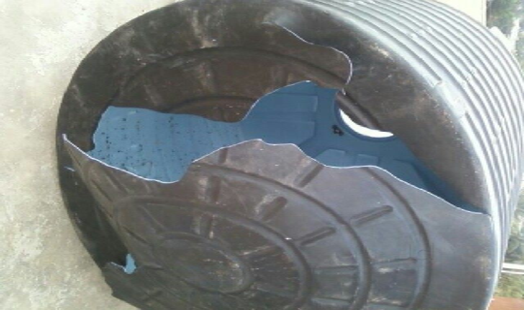
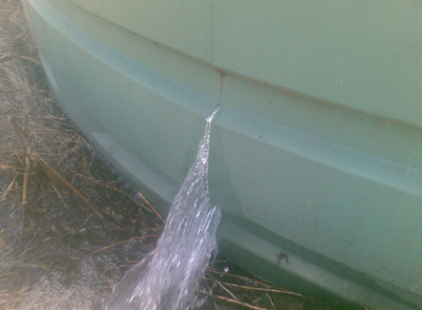
CHECKLIST FOR FRESH WATER UNDERGROUND TANKS
- Do not over excavate. Excavation has to be done based on the size of the tank, keeping an allowance of 1 feet all around for easy erection.
- If the soil is sandy or clayey, then adequate care should be made while erecting the tank. Crane and truck should at a distance of at least 3m away from the edge of the pit, so that it does not exert any pressure on the soil and make it collapse.
- Ensure that all minimum setback distances from buildings and boundary fences etc. are achieved.
- Ensure safety barrication, so that unauthorized people do not enter while the erection work is in progress.
- If rain is likely to come during the time of erection, do not commence excavation.
- Ensure that the base is levelled and filled with at least 100mm of sand or crusher dust. If the soil is slushy, then it is better to lay PCC.
- Remove any water from the excavation prior to tank installation.
- Backfilling should be done with loose sand and it should be well compacted, so that all the voids are filled properly.
- Check the location of services both underground and overhead (electricity, sewer, telephone, mains water, and storm water), as these should not hamper the works.
CIRCULAR TANK
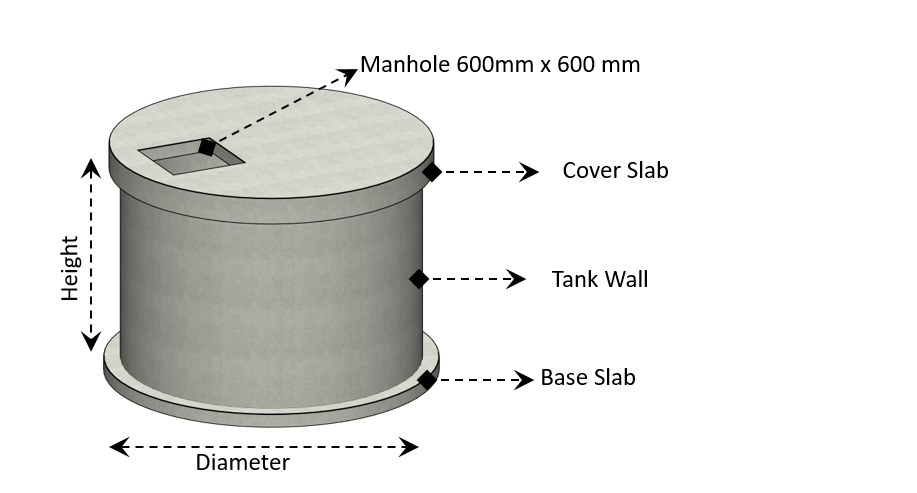
STANDARD SIZES OF CIRCULAR TANK
STANDARD SIZES OF CIRCULAR TANK
*TN(Tank) – D(Domestic) – C(Circular) – 05(Capacity) – L(Light Duty)
RECTANGULAR TANK
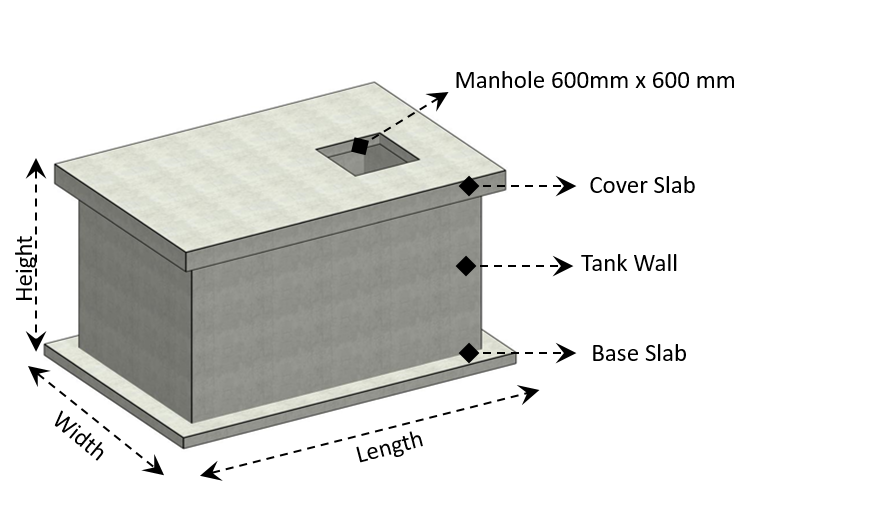
STANDARD SIZES OF RECTANGULAR TANK
tableeeeeeeee
*TN(Tank) – D(Domestic) – C(Circular) – 05(Capacity) – L(Light Duty)
COMMERCIAL TANK
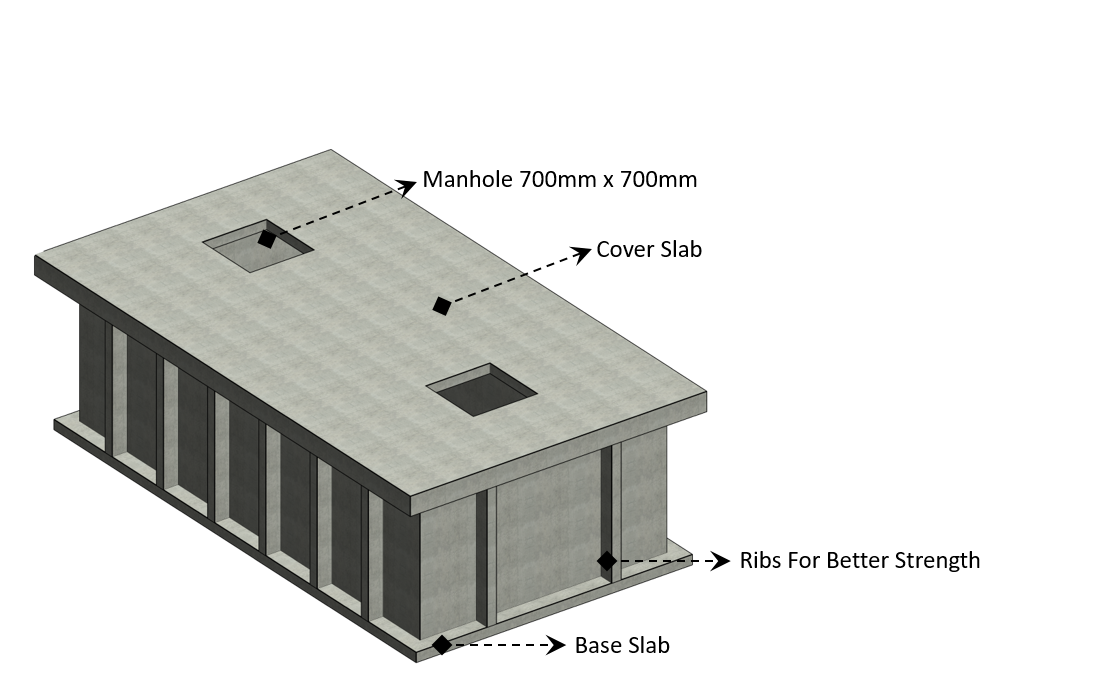
STANDARD SIZES OF COMMERCIAL TANK
tableeeeeeeee
*TN(Tank) – C(Commercial) – R(Rectangular) – 12(Capacity) – L(Light Duty)
*TN(Tank) – C(Commercial) – R(Rectangular) – 12(Capacity) – H(Heavy Duty)
INDUSTRIAL TANK

STANDARD SIZES OF INDUSTRIAL TANK
tableeeeeeeee
*TN(Tank) – C(Commercial) – R(Rectangular) – 12(Capacity) – L(Light Duty)
*TN(Tank) – C(Commercial) – R(Rectangular) – 12(Capacity) – H(Heavy Duty)
REQUIREMENTS
- Bulk density of backfill soil should be 18kN/m3
- Backfill material adjacent to invert wall should be of granular type
MATERIAL SPECIFICATIONS & OTHER SPECS
- Concrete : Grade 40 to Grade 45
- Steel : Fe500
- Nominal cover : 25mm
DESIGN CRITERIA
- IS 456 : 2000
- IS 3370 : 2009
- IRC : 6 – Cl. 214.1.1.3
LOADS CONSIDERED IN THE DESIGN

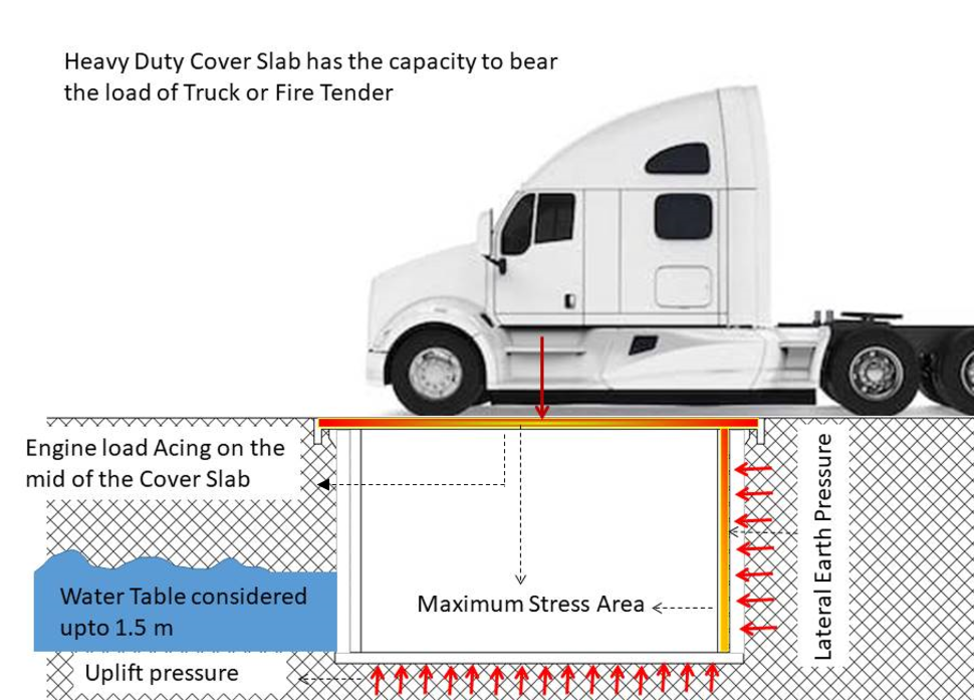
QUALITY CHECKS
Apart from the quality checks on raw materials, production and finishing, tanks are scrupulously checked for watertightness before delivery
STEP 1: TANK IS KEPT ON A RAISED PLATFORM

STEP 2: WATER IS FILLED UNTIL THE TOP LEVEL

STEP 3 : TOP LEVEL IS MARKED AND MONITORED FOR 24 HOURS AFTER 24 HOURS, THE LEVEL IS MEASURED TO SEE IF THERE IS ANY DROP IN THE WATER LEVEL

STEP 4: PHYSICAL EXAMINATION IS ALSO DONE TO SEE IF THERE ARE ANY VISIBLE LEAKS
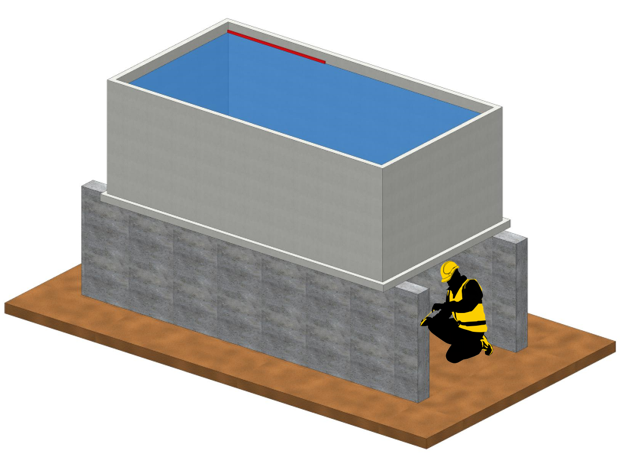
BENEFITS OF FRESH WATER TANKS

Suitably designed even for areas with spatial constraints

High Strength

Factory Made

Affordable Price

Chemically Inert

Durable

Easy and Quick Installation

Maintenance Free

Environmental Friendly

Easily Relocated
GALLERY













